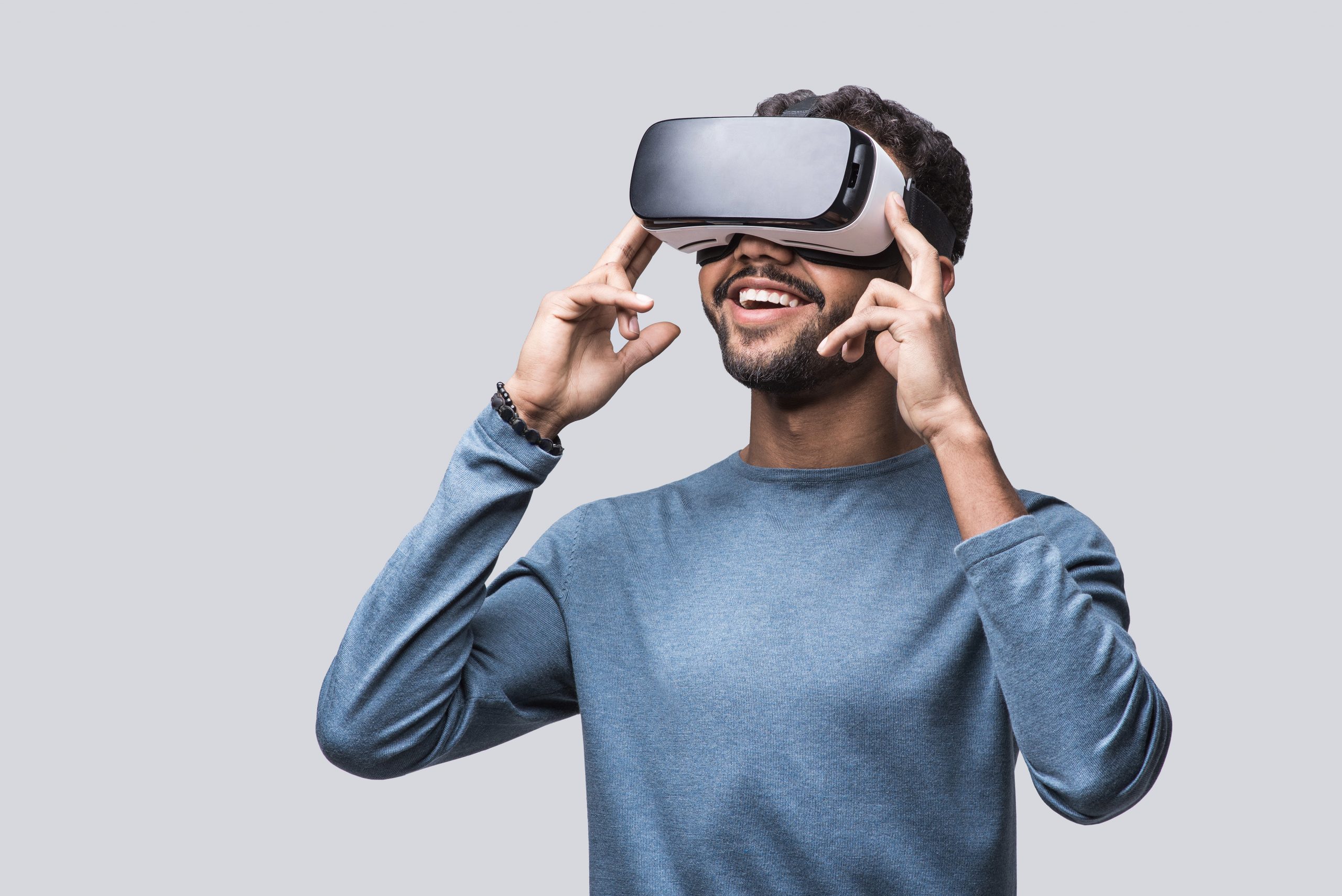AR, MR, VR, the rise of the 3rd screen
We already knew the second screen i.e. the mobile (phone or tablet), successfully used by Riplee’s customers for various applications (Top Chef on RTL, Rising Star on M6).
Now it’s time to introduce a new potential extension of the audiovisual experience, a third “screen”, which can take three forms depending on the configurations: virtual reality (VR), augmented reality (AR) and the dynamic interaction of AR with reality, mixed reality (MR).
Virtual Reality (VR), a world apart
Due to the measures taken to limit the pandemic, New Year’s Eve 2021 could not take place under the usual conditions. It was an opportunity for Jean-Michel Jarre, accustomed to unusual events, to propose a virtual reality concert at the heart of a digital reconstruction of Notre-Dame de Paris, thus freeing himself from two constraints: the impossibility of performing in public and the real unavailability of the venue, still under construction. A fine demonstration of the potential of RV, in multicasting on BFM TV, France Internet, Youtube, Facebook, etc…
He will not have been the only one to exploit this technology in 2020. In August, The Weeknd attracted no less than 2 million participants for its virtual reality experience on TikTok, produced by WaveXR, a company that specializes in creating live streaming virtual events.
During the 2018 soccer World Cup, TF1 offered its viewers the opportunity to watch the competition in a virtual dressing room via its MYTF1VR app.
M6’s 6Play 360 application (developed by Riplee on iOS & Android) has also already offered the retransmission of images in VR, for example in addition to an exceptional report dedicated to the Puy du Fou in July 2016.
Virtual reality can be consumed either via the first or second screen (TV-computer / mobile), or via a dedicated headset, a third screen, for a totally immersive experience, immersing you in the magic of a world apart. This virtual world will be either composed of real images reconstituted or totally dreamlike. Oculus helmets are today’s most affordable solution for the general public.
We are still at the very beginning of RV but we can already glimpse the evolution of immersive experiences, notably through the democratization of sensory perception accessories, including gloves and haptic suits.
Augmented reality (AR)
What could be displayed in addition to traditional video content?
We can imagine wrapping a television screen in a virtual environment inspired by the nature of the program (imagine your screen surrounded by creepers during the broadcast of Tarzan or garnished with macaroons during Qui Sera Le Prochain Grand Pâtissier…).
We can imagine objects appearing on the living room table at key moments of a show, like a close up magic trick during an interruption of Diversion on TF1. How would you like to be able to test the installation in your living room of a piece of furniture proposed by a show dedicated to interior decoration? Or take part in your favorite game in AR?
The imagination of the creators is the only limit to the inventiveness that can be deployed. Anything is possible when the virtual invites itself in superimposition of the real! We invite you to discover in this other article how 5G allows to accelerate the implementation of AR services in stadiums.
What’s the status of consumer eyewear?
The additional content layer in AR can be displayed either through the screen of a smartphone (or a tablet) or through dedicated glasses, like those that can be used for mixed reality (MR).
As far as dedicated glasses are concerned, Magic Leap had initially profiled itself as a B2C player but has repositioned itself on the Enterprise segment (virtual learning, medical, industrial applications, etc.), Microsoft Hololens is already available but remains a very expensive product (more than €3000 excluding VAT). Sony SmartEye Glass is available from $799 but its monochrome display limits the possibilities. A concept of Snap Goggles suggests what the Snap Shows could offer if they were equipped with an AR function (to display Snapchat filters overlaying the real one).
https://www.youtube.com/watch?v=YHRGqUBh3Ss&feature=youtu.be
According to some rumors, Google Glass, now folded into the Enterprise niche, like Magic Leap, may in the future offer a new consumer version of its product, adapted to the evolution of the AR/MR. Facebook announces VR glasses for 2021.
AR Glasses Project – Source: Facebook
We also expect AR/MR glasses from Apple in 2021 or 2022, which will be the natural extension of its software expertise (ARKit). It will undoubtedly be the iPhone Moment of AR. While waiting for affordable glasses (and later lenses) to appear, the smartphone will be the preferred interface to experience augmented reality, both on iOS and Android.
Mixed reality, an ideal format to enhance the experience of sports enthusiasts
If you’re a fan of the genre, you’ll have already noticed that sports event broadcasts are full of data, from player biographies to real-time gaming statistics. Mixed Reality (MR), which dynamically combines the real-world experience with virtual elements, is the perfect technology to enhance the experience of a sports broadcast.
Microsoft Hololens has announced a collaboration with the NFL to develop programs that allow viewing a soccer game as a hologram, in addition to the usual 2D image offered by the TV set.
The hologram is enriched with a whole series of statistical information generated during the game. The game can be replicated on the living room table. It is also possible to zoom in on a player and display his personal data. Or take the game with you to the bathroom so you don’t miss any of the action. Imagine this process applied to other sports. Here again, the creative possibilities are endless.
FoxSports offers a 360° RV experience (via an immersive RV helmet) that bodes well for what will be possible to experience in the real world when augmented reality glasses (or lenses) are as common as a smartphone. For a selection of events, information and virtual objects are superimposed on the 360° filmed competition images. Today the user still alternates between the classic consumption of content via his TV screen and the immersive experience, but the day will come when the RV and/or MR experience will be the norm.
The future still holds many surprises in store for us…
Associated with live streaming, the extension of the user experience through virtual reality, in all its forms (VR/AR/MR), limited to the image or supplemented with sensation simulators, allows to reinforce interactivity, the emotional link with the action, while opening new sensory dimensions.
More than just a third screen, it’s a new playground of unlimited possibilities open to audiovisual creators. We’ll be on the lookout for all these innovations to offer them to our customers.


